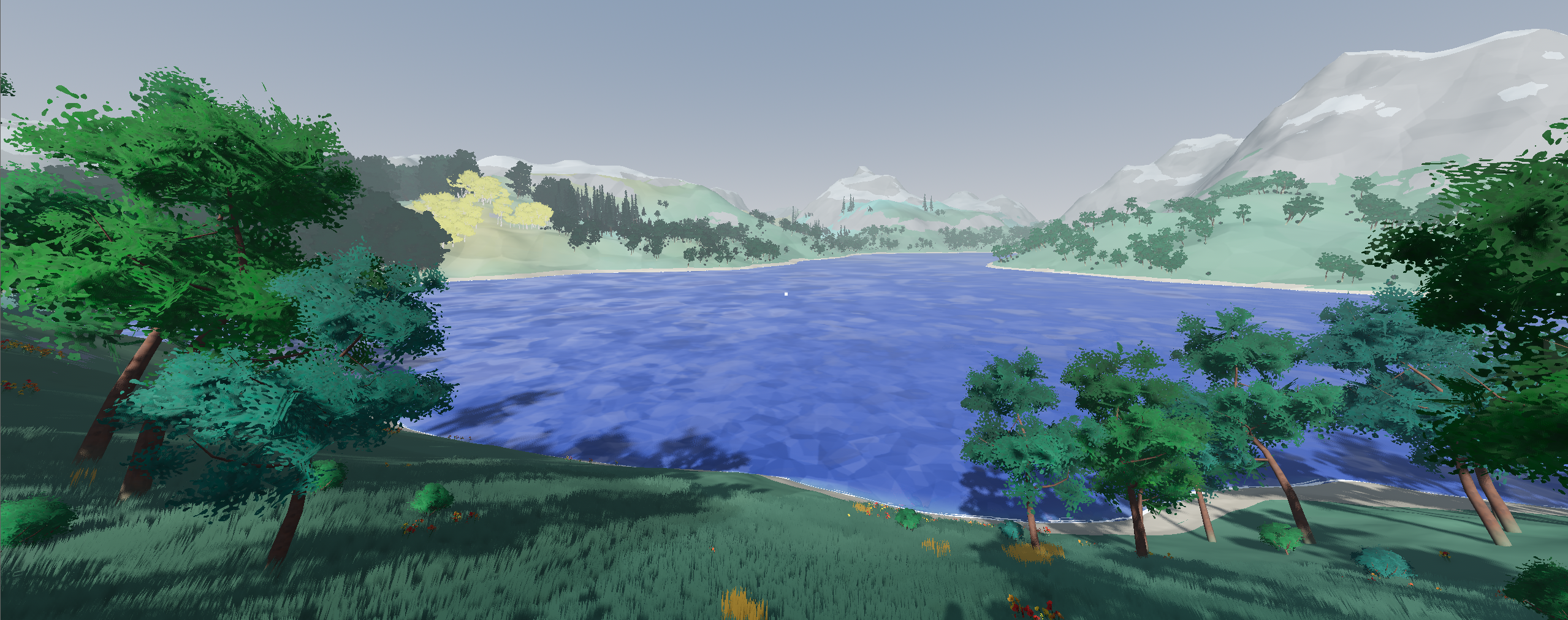Destructible Large-Scale Voxel Planets using Surface Nets
A while back, I showed my first implementation of a Smooth Voxel Terrain. While I was reasonably satisfied, it left a lot to be desired. The terrain suffered from some artifacts and performance issues, and because it was programmed in C# it could not be easily integrated into other projects. For these reasons, I decided to start working on a new implementation from scratch in C++, addressing many of these problems.
read morePopulation of a Large-Scale Terrain
Previously I introduced a Large-Scale Smooth Voxel Terrain While impressive in scale, it lacked visual variety and complexity. One way to mitigate this is by introducing natural objects such as grass and trees.
Many voxel engines and games such as minecraft tackle this by incorporating these features into voxels too, but this can both make asset creation more difficult, and increase the demands put on our voxel octree. Instead, I chose to implement more traditional methods of distributing objects on the terrain surface, often seen in games in combination with heightmap terrains.
read moreLarge-Scale Smooth Voxel Terrain
Update: I rewrote this project from the ground up in C++, and I made some algorithmic improvements. Please refer to the new version.
Rendering large terrains is no easy task. In real-time computer graphics, terrains are often large subdivided planes with vertices translated vertically based on a heightmap, but this means that overhangs or caves are impossible without extra work or additional meshes. Instead, we can use a three dimensional volume to represent the terrain.
read more

